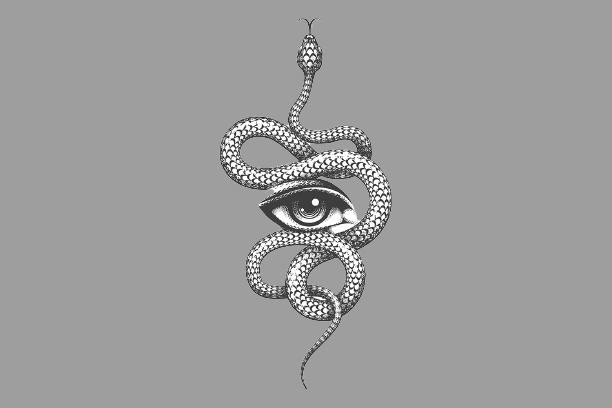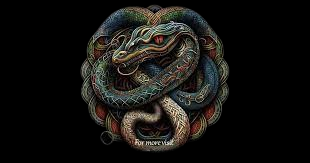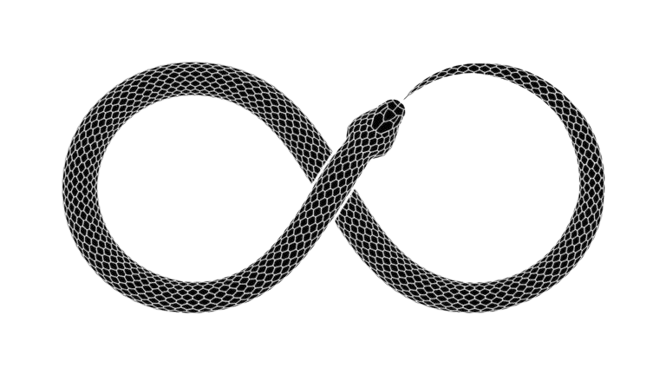Snakes have long been considered an emblem of transformation, healing and wisdom, often featuring prominently in myths and legends as well as on flags representing freedom such as Gadsden flag.
Dreaming of snakes may symbolize feelings of being overwhelmed or threatened by someone. Dreams featuring boa constrictors could indicate your desire to protect yourself from those causing you harm. Some peoples use to draw snake symbols unintentionally on a notebook or a paper this consider as ASMR or relaxing activity.
Symbol of rebirth
Snakes have long been revered symbols of renewal and transformation in spiritual traditions worldwide. When shed, their skin sheds to reveal new life beneath, while their coiling shape symbolizes renewal and growth. This symbolism can also be found in esoteric systems like alchemy, where snakes symbolize the union of masculine and feminine energy. Additionally, some cultures venerate them as gods or guardians of sacred sites.

As an Egyptian goddess Wadjet wears the serpent as her headdress and it represents wisdom and protection, in Hinduism the snake deity Naga is often depicted coiled around Vishnu or Shiva’s necks as a protective figure – not only is the snake associated with fertility and rebirth; but they can also bring healing by awakening our consciousness with their powerful Kundalini energy that may awaken consciousness.
Snakes are among the oldest and most universal symbols, with meaning varying depending on culture. Snakes represent a fascinating duality – some resembling temptation while others stand for wisdom and power. Dreaming about seeing one could be a telltale sign that challenges or danger is on its way; or it may simply represent the idea that old beliefs no longer serve you well and must be shed to move forward with life.
Symbol of protection
Snakes have long been revered as protectors, due to their ability to shed their skins symbolizing renewal. This trait made snakes sacred in numerous cultures including ancient Greece, Egypt and North American Ojibwe traditions. Snakes also are associated with healing – the Greek god Aesculapius used to wear one wrapped around his staff. Furthermore, ancient people believed a snake totem animal could help remedy both physical and spiritual ailments.
However, snakes aren’t all-powerful, and can be dangerous. Snakes are known for their cunning and deceitfulness – as evidenced in the Bible where Eve was tempted by the serpent in Eden to eat from forbidden tree. Thus snakes act as potent symbols representing both good and evil forces in society.

Dreams that feature snakes may symbolize sexual desire. A black snake could represent dark forces trying to enter your life or an indicator that something sinister may be at play in your environment, as well as an augury warning you should keep an eye on things behind you. Snakes also often represent male sexual energy – often depicted as sexual predators but can also act as symbols of protection and healing in dreams.
The snake is an iconic symbol of transformation, changing to reflect each season and season’s cycle of change. They are also associated with healing and immortality as their skin can shed to reveal new flesh beneath. An iconic representation of an ouroboros (Greek for “tail eater”) snake eating its own tail was seen by ancient cultures as representing eternity as well as sexual intercourse; with the tail representing male organs while its mouth representing female ones.
Symbol of wisdom
The snake has long been revered as a powerful symbol of wisdom, transformation, healing, and renewal. It can often be found in dreams, scripture, nature and its wild surroundings but can also represent deceit and temptation. Its duality–death and rebirth–is illustrated by their ability to shed their skin every few months–thus justifying its place as a revered creature throughout time. This symbolism has led many religions around the world to revere snakes as sacred animal images.

The serpent is an ancient and potent symbol that can be found across numerous cultures and religions, such as in the Garden of Eden when Eve was lured in with promises of immortality from its serpent. Additionally, Moses erected a brass serpent on a pole in the desert as a representation of God’s healing power; similarly in Hinduism serpents are associated with Shiva and Kundalini and serve as symbols for spiritual awakening.
Snakes have long been seen as symbols of protection and healing. In ancient Egypt, snakes were considered divinely powerful beings with incredible strength; Pharaohs would wear jewelry depicting snakes to demonstrate their connection with spirit world. Furthermore, Celtic mythology considers snakes to be protectors.
Snakes have long been an emblem of duality in life and death rebirth in modern art, serving as a symbolic reminder. Giuseppe Arcimboldo’s painting Ouroboros shows a snake eating its own tail to illustrate this concept.
Symbol of healing
The snake has long been seen as a symbol of death, sin and evil; yet at the same time healing. Snakes shed their skin regularly as an emblematic sign that renewal and transformation have taken place; therefore venerated in several spiritual traditions including Buddhism, Christianity and Hinduism as a sacred being; furthermore its motif can often be found throughout decorative arts worldwide and through history.

The Garden of Eden snake, Unhcegila, that seduced Eve into eating forbidden fruit has come to symbolize both temptation and evil in popular culture. At the same time, however, Native American cultures revere snakes as powerful yet sacred beings who must not be killed. Blackfoot and Lakota Sioux tribes believe he’s responsible for rot in flesh while Cherokee people hold them sacred beings who should not be killed.
Dreams involving snakes often have different interpretations depending on their color and appearance. A dream in which black snakes appear might portend danger in your life; on the other hand, yellow ones could signal that your emotional wounds have begun healing; seeing any form of serpent in one’s dreams often suggests death or destruction to come – whether in terms of relationships or jobs.



